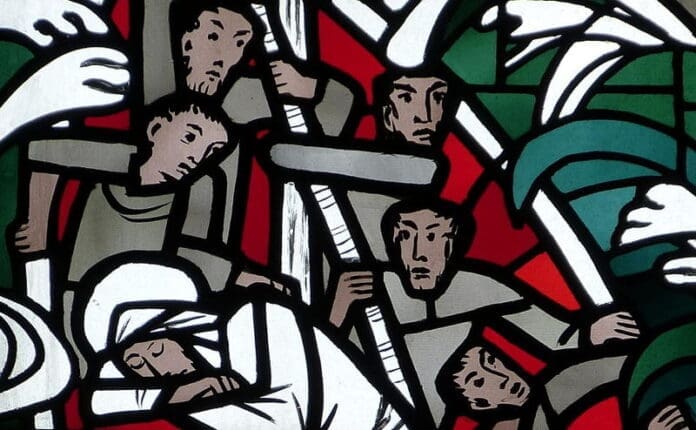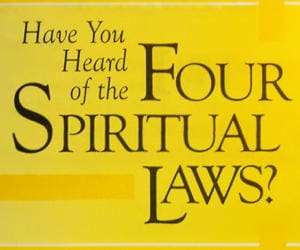How do we know the resurrection of Jesus is true?
How do we know the disciples didn’t lie about the resurrection of Jesus?
———————-
EXAMINATION
———————-
“Peter went out with the other disciple, and they were going toward the tomb. Both of them were running together, but the other disciple outran Peter and reached the tomb first. And stooping to look in, he saw the linen cloths lying there, but he did not go in. Then Simon Peter came, following him, and went into the tomb. He saw the linen cloths lying there and the face cloth, which had been on Jesus’ head, not lying with the linen cloths but folded up in a place by itself. Then the other disciple, who had reached the tomb first, also went in, and he saw and believed; for as yet they did not understand the Scripture, that he must rise from the dead” (John 20:3-9).
“On the evening of that day, the first day of the week, the doors being locked where the disciples were for fear of the Jews, Jesus came and stood among them and said to them, “Peace be with you.” When he had said this, he showed them his hands and his side. Then, the disciples were glad when they saw the Lord. Jesus said to them again, “Peace be with you. As the Father has sent me, even so, I am sending you.” And when he had said this, he breathed on them and said to them, “Receive the Holy Spirit…Then he said to Thomas, “Put your finger here, and see my hands; and put out your hand, and place it in my side. Do not disbelieve, but believe.” Thomas answered him, “My Lord and my God!” Jesus said to him, “Have you believed because you have seen me? Blessed are those who have not seen and yet have believed” (John 20:19-23, 27-29).
There are two things to notice about this passage. First, following Jesus’ death, and even during his resurrection before the disciples had seen Jesus, they were hiding, cowering in fear at what the authorities might do to them. They had seen the empty tomb, but had not yet believed in the resurrection until Jesus appeared before them.
That Peter and John ran together is interesting since Peter and John were the ones closest to Jesus when he was arrested and tried. Peter followed at a distance, but John went into the courtyard of the High Priest. Then John was at the cross. Peter was not.
I wonder if Peter and John ran to the tomb because they wanted the resurrection to be true. Peter wanted forgiveness. John wanted assurance. Peter was the one who abandoned and denied Jesus, and John was the one who followed him to the cross. Interestingly, Peter was crucified for his faith, but John died of natural causes. In fact, all of the disciples who abandoned him suffered terrible deaths. But John died an old man, in peace.
“According to Christian historian Tertullian, John was banished to Patmos after being plunged into boiling oil in Rome and suffering nothing from it.”
Peter saw “the linen cloths lying there” (V.5). John also looked and believed. What did they see that made them believe? I believe they saw the form of Jesus’ shroud. That is, Jesus’ burial clothes were not in a clump or a pile; rather, his shroud was in the same shape as his body. In other words, Jesus rose through the shroud. He did not need to unwrap himself.
Though they all abandoned Jesus, Jesus’ first words to them on seeing them for the first time was, “Peace be with you” (V.19).
He said, “Peace be with you” a second time before telling them their mission (V.21). He was going to send them to the world, and the Holy Spirit would be with them. What’s interesting is that elsewhere in scripture, the Holy Spirit is associated with peace (Romans 14:17).
What are some of the other evidences of Jesus’ resurrection?
- Jesus appeared to his disciples over many days
- The disciples were transformed from cowards to supernaturally brave men. Except for John, all went to violent deaths, and they never recanted their stories about Jesus.
- If they knew they were lying, they might have confessed. Almost no one is willing to die for something they know is a lie. But the Gospel isn’t a lie, so they died.
- Jesus foretold his resurrection many times, even his enemies knew it (Matthew 27:63), and used that to convince Pilate to give them troops to guard the tomb.
- According to both Jesus’ enemies and his friends, the tomb is empty, and something extraordinary happened.
Thomas summed up what became obvious to them all. “My Lord and my God!” (V.28).
What have we learned so far?
- Peter and John believed in the resurrection after seeing the tomb.
- Only John was with Jesus at the cross, and only he did not die a horrible death.
- Jesus provided evidence for his resurrection.
- Jesus pronounced peace to his disciples and gave them the Holy Spirit, who is associated with peace.
- Jesus commissioned the disciples just as he was commissioned.
—————————
INTERPRETATION
—————————
The resurrection is rational and believable. All of the evidence we have suggests that Jesus rose from the dead never to die again. John wants us to know this and says so in John 20:30-31.
“Now Jesus did many other signs in the presence of the disciples, which are not written in this book; but these are written so that you may believe that Jesus is the Christ, the Son of God, and that by believing you may have life in his name.“
Regarding Jesus saying, “Peace be with you,” Jesus did not hold their abandonment against them. He forgave. God wants us to forgive those who have harmed us, just like Jesus forgave his disciples when they abandoned them.
Peace is an important part of the Christian faith. Before faith in Christ, we were God’s enemies (Romans 5:10). But look at the events of Holy Week.
- Jesus rode into Jerusalem on a donkey, a symbol of peace.
- Upon approaching Jerusalem, Jesus declared his desire for peace, saying, “Would that you, even you, had known on this day the things that make for peace!” (Luke 19:42).
- During the last supper, Jesus declared peace to his disciples, saying, “Peace I leave with you; my peace I give to you” (John 14:27).
- Jesus accomplished peace on the cross–the veil of the temple was torn in two, a sign that men could now approach God freely.
After coming to faith, we receive God’s peace, meaning that God is no longer at war with us. Peace is declared, and we can live forever in that peace.
——————————-
FALLEN CONDITION
——————————-
The Fallen Condition in this passage is the unbelief of the disciples. They were without peace, cowering in fear, doing nothing.
————————————
REDEMPTIVE SOLUTION
————————————
What was God’s Redemptive Solution to this problem of unbelief and fear? Jesus’ solution was not just resurrection, but resurrection that would transform his disciples by giving them peace.
Perfect love casts out fear. They experienced Jesus’ love and forgiveness, and that brought them to peace.
“There is no fear in love, but perfect love casts out fear. For fear has to do with punishment, and whoever fears has not been perfected in love” (I John 4:18).
There is no punishment where there is peace.
———————
APPLICATION
———————
How many times have we not done something we know we should do because we are afraid? Sharing Christ with others? Reaching out to people who have had a hard or violent life? Representing Christ in a public forum of some kind? Fear is the destroyer of peace. Whereas love casts out fear, peace replaces fear and magnifies love.
There are two components for overcoming fear in spiritual things.
- Be at peace in the resurrection of Christ. If God resurrected Jesus from the dead, never to die again, imagine what he might do for you.
- Just as Jesus gave his disciples the Holy Spirit, we have the same Holy Spirit who will empower us. Scripture makes it clear that the same Spirit that raised Jesus gives us the same power to live the Christian life.

